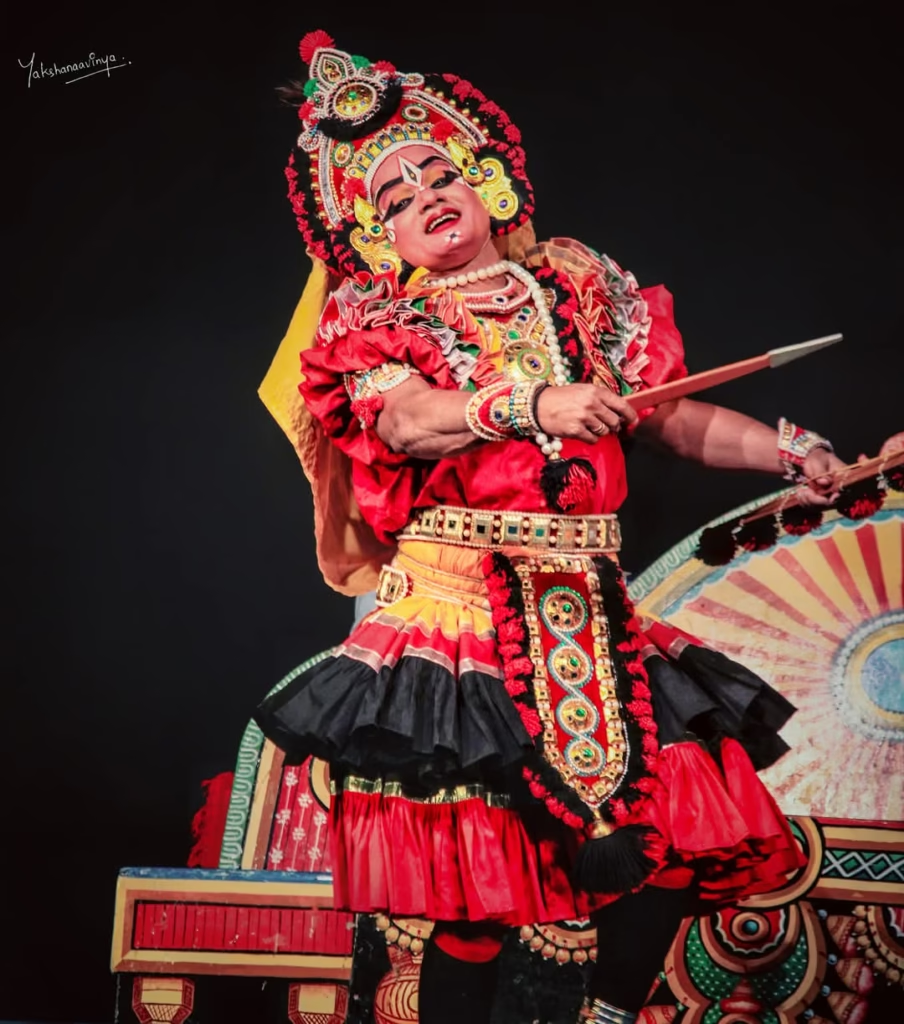Badagutittu vs Thenkutittu – A Detailed Comparison of Yakshagana Styles
Yakshagana, the vibrant traditional theatre form of Karnataka, has evolved into two major styles — Badagutittu (Northern style) and Thenku Thittu (Southern style). While both belong to the same performing art, they differ greatly in presentation, music, costume, and movement. Let’s explore their fascinating contrasts.
1. Geographical Influence
- Badagutittu: Predominantly seen in Udupi, Uttara Kannada, and Shimoga regions.
- Thenku Thittu: Popular in Dakshina Kannada, Mangaluru, and bordering areas of Kerala (Kasaragod).
These regions have deeply influenced the development of each style’s rhythm, attire, and storytelling traditions.
2. Costume and Makeup
- Badagutittu: Characterized by heavy headgear (Kirita), elaborate face makeup, and striking costumes.
- Thenku Thittu: Comparatively lighter costumes and simpler headgear, focusing more on facial expressions and dynamic movement.
3. Dance Style
- Badagutittu: Emphasizes graceful, disciplined footwork and symmetry. The movement is slower but more controlled.
- Thenku Thittu: Known for vigorous body movements, fluid gestures, and strong expressive energy on stage.
4. Music and Singing
- Badagutittu: Singers usually sit at the back of the stage. Instruments like Maddale, Chande, and Harmonium are used with a classical tone.
- Thenku Thittu: Singers often stand and interact directly with performers. The narration is more dramatic and direct.
5. Notable Artists
Badagutittu
- Dr. Shambhu Hegde
- Gopal Acharya
- Krishnamurthy Hegde
Thenku Thittu
- Chittani Ramachandra Hegde
- Krishnamurthy Puranik
- Nekara Shankar Shetty
6. Why the Difference Matters
Both styles represent unique cultural ecosystems within the Yakshagana tradition. While Badagutittu draws on classicism and elegance, Thenku Thittu shines with emotion and energy. Audiences love both — each offering a distinct storytelling journey.
Learn more about Yakshagana artist Rajesh Bhandari.
Read the full Yakshagana history in Kannada.


